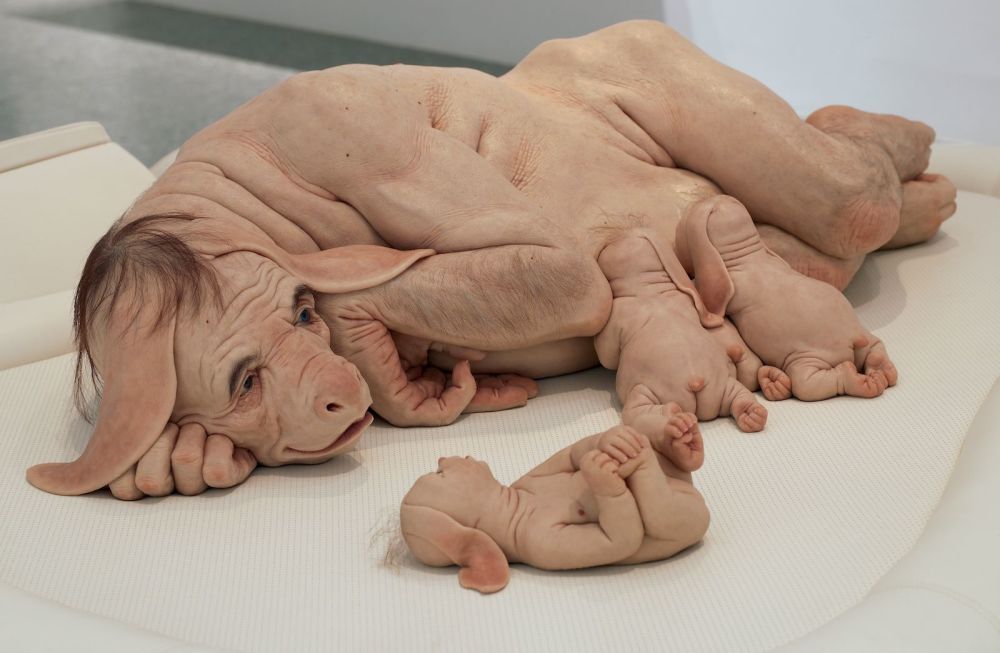

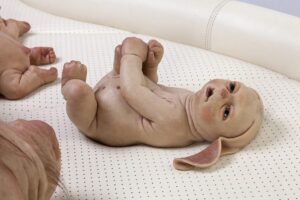
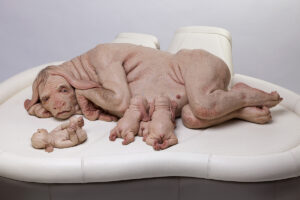
The sculpture shows … well … it is not known what, or rather whom … The characters are somewhat familiar, and yet surprisingly different. It seems that we have a fairly banal genre scene in front of our eyes, with the mother of the animal feeding the young, but on closer inspection you can see that the people presented here belong to some new, unknown species of creatures, neither pigs nor dogs, nor humans. The artist seems to be examining our ability to accept and our rejection reflex. We see the mother and children, people who require respect and protection, at the same time alien, different, perhaps dangerous, repulsive creatures. What will win in us? Curiosity and willingness to accept, or disgust and fear?
Piccinini was born in Sierra Leone in 1965, but became associated with Australia. Her works often depict hyperrealistic images of genetically modified beings, or elements of technology, that exhibit life traits. Piccinini can be described as the most popular artist in the world, as 440,000 people visited her individual exhibition in Rio de Janeiro.
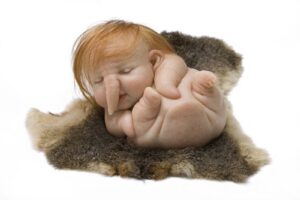
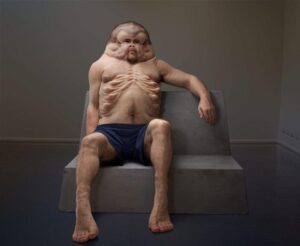

Looking at these characters, you can test your own reflexes – and this is probably the success of Piccinini’s work. What rejects me, what attracts me, could I make contact with someone like that, could I make friends – or even, why not – could I have sex with someone like that. The beaver above does not look that much different from the shop lady who serves in the greengrocer next door, and the tail? Real affection does not perceive a handicap – and any handicap is also a source of new strength. And suddenly a thought appears that we ourselves are presented in these sculptures, these installations, and the titles of the works refer to our everyday life. If we had the courage to confront our naked body, would we turn out to be so much more normal and ordinary than these creatures? Perhaps not at all. Each of us has something sticking out of it, we have too much of something, we have something hanging somewhere, etc. Perhaps the charm of Piccinini’s sculptures is hidden in the normality of her “people”.